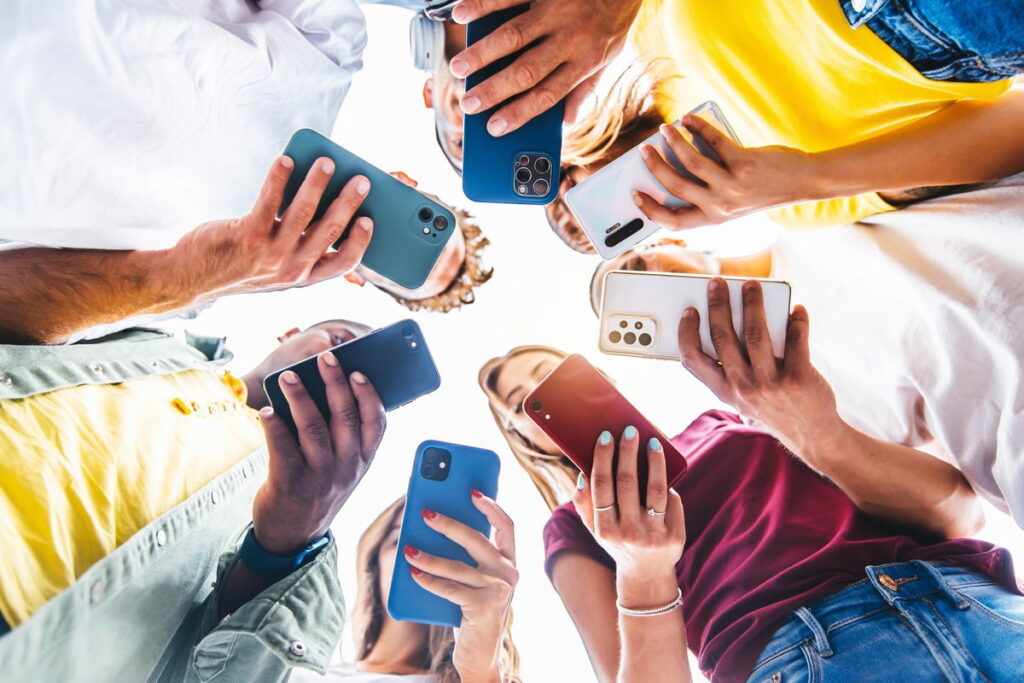
Compulsive use of mobile phones is the red flag to watch for in teenagers | Credits: Shutterstock
Teenagers hooked on screens—not just glued to their phones, but genuinely unable to stop—are twice as likely to consider or attempt suicide, according to a four-year study tracking over 4,000 adolescents, the Guardian wrote.
This isn’t about how many hours a kid spends scrolling or gaming. It’s about whether they’ve spiralled into addictive, compulsive use, so much so that it disrupts sleep, schoolwork, exercise, or social life. Those warning signs were clanging loud and clear in this study, with roughly one in three teens falling into “increasingly addictive” use patterns over time.
The data is stark. For mobile phones, about half showed high addictive use from the start, and that stayed consistent as they got older. Another quarter drifted into increasingly addictive habits. On social media, 41 per cent fell into high or increasing addiction arcs. And video games? Over 40 per cent also followed a high-addiction trajectory.
Being in those high-risk groups translates to two to three times greater odds of suicidal thoughts or behaviours—and that’s before you factor in anxiety, depression, aggression or acting-out issues. And here’s the kicker: simply spending a lot of time on a screen didn’t predict poor mental health—compulsion did.
Banning phone use is not enough
Dr Yunyu Xiao, who led the research at Weill Cornell, sums it up: “The discussion around mobile phones and social media has focused on limiting or banning use, but our results indicate more complex factors are involved.” She’s not saying “just ban it already.” Her point is we need the same kind of support we give kids with other addictions—cues, interventions, coping strategies, not just screen time limits.
“Testing interventions that work against other types of addiction may be one way to approach this type of social media and mobile phone use,” Yunyu added.
The implications are big. Governments are scratching their heads over how to protect young minds. Mental health teams are under pressure. Schools are struggling with students who struggle to unplug. Parents caught between fear and frustration are often tempted to confiscate devices without addressing the underlying issues.
There’s no easy fix. Xiao notes that half-measures—like taking phones away only at night—might do more harm than good. Research shows that partial access triggers obsession: kids sneak screens, anxiety rises, compulsion deepens.
Lack of self-control fuels suicidal behaviour
Then there’s Prof Amy Orben from Cambridge, who adds a crucial caveat: the study doesn’t prove screen addiction causes mental illness. It could be that impulsivity or lack of self-control fuels both addictive use and suicidal behaviour. But she stresses the point: it’s how teens use tech—and how they feel about it—that counts.
That matters. Because the number of kids classified as “compulsively hooked” isn’t small. These are not fringe cases. These are teens whose world is being undermined by invisible addiction, the kind that hides behind everyday scrolling, gaming, and chatting.
What needs to happen now only sounds obvious. We need to teach kids, parents, and teachers how to spot addiction cues, not just track time. We need accessible help, early interventions, funding, policies backed by research, not just fads. We need screen-smart communities that don’t blame or shame, but understand and help.
Compulsion is the red flag
Social media giants and game makers can’t look away either. Their designs are optimised to keep attention locked in. That advantage needs an accountability check. Screens aren’t bad in themselves. But addictive designs? Those are a larger societal problem we’re only just beginning to see—and feel the consequences of.
Orben said, “The study importantly highlights that why and how young people use technologies, and how they feel technologies affect their lives, may matter more to their mental health than the time spent online.” And she added: “As those reporting such issues are not a small proportion of the population, supporting them should be taken seriously.”
If your teenagers shows signs of spiralling distress when offline, or relies on device notifications and worsening mood, the study sends a clear message: compulsion is the red flag, not idle scrolling. That’s the behaviour we need to catch and act on—fast, humanely, intelligently.
Let’s not wait till the next tragedy. Let’s listen to what these teens are telling us, and meet them with solutions that treat the addiction, not just the symptom.







